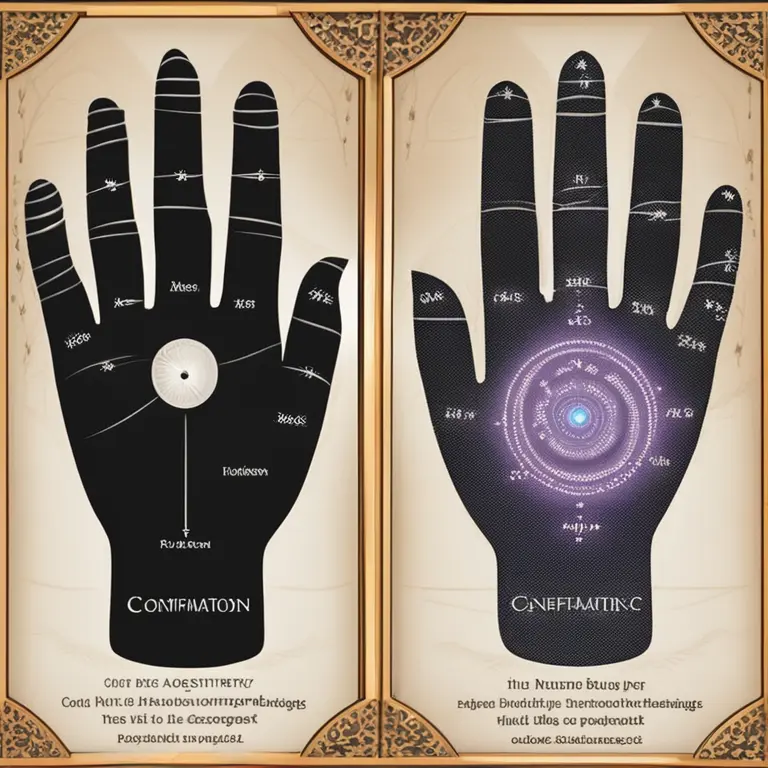
The Myth of Palm Reading: A Rational Perspective
Exposing palmistry as an unfounded practice, this article delves into the claims of palm reading and why it lacks scientific backing.
article by Nora Pennington
Scrutinizing Palmistry's Foundations
Palmistry, also known as chiromancy, is an ancient practice that suggests that a person's palms hold the key to predicting their future, character, and abilities. While it has been a part of human culture for millennia, originating in regions like India, China, and ancient Babylonia, palmistry's premises are widely regarded as dubious by the scientific community. Critics argue that the practice is steeped in superstition rather than empirical evidence. Despite the rich tapestry of lore surrounding palm lines and their supposed meanings, there is a stark absence of reproducible, testable, and falsifiable claims—a foundational requirement for scientific acceptance.

Evaluating the Forer Effect
One of the primary reasons palmistry persists is due to psychological phenomena such as the Forer Effect. This cognitive bias occurs when individuals believe that vague, general statements about personality are highly accurate for them personally. For instance, a palmist might suggest a 'strong life line' signifies a robust health or a long life. Such statements are usually broad enough to resonate with a wide audience, making them appear profound. The Forer Effect plays into the hands of practitioners, not because their readings are precise, but because human psychology is susceptible to believing in personalized interpretations from generic observations.

The Issue of Confirmation Bias
Confirmation bias also significantly influences the perceived veracity of palm readings. The tendency to remember hits or accurate predictions and forget the misses is widespread. As a result, when a prediction seams to come true, it reinforces the belief in palmistry's legitimacy, overshadowing the numerous instances where it fails to align with reality. Moreover, followers of palmistry may unconsciously adjust their memories or interpret events to coincide with a palmist's predictions, further entrenching their conviction in a cycle of self-affirmation rather than objective analysis.

Scientific Scrutiny and Lack of Evidence
Scientific inquiry values consistency, reproducibility, and predictive power—criteria that palmistry fails to meet. Multiple studies have tackled the claims of palmistry, revealing no significant correlation between palm lines and an individual's personality or future events. The lines on a person's palm are primarily formed due to fetal hand movements and genetic factors, making them distinctive but not prophetic. Any attempt to associate these lines with more profound meaning has not been supported by credible scientific evidence, thereby placing palm reading squarely in the realm of pseudoscience.
Modern Technology and Old School Myths
As we advance into 2024, we find ourselves surrounded by groundbreaking technologies that can analyze our genetic makeup, track our health through biosensors, and use big data to make sophisticated projections about our future. In such a scientifically driven age, the pre-scientific tradition of palmistry seems particularly anachronistic. While some may argue it's a harmless diversion, others insist that promoting practices like palmistry could discourage individuals from seeking evidence-based solutions and rational advice when facing life's challenges.
Conclusion: Skepticism as a Virtue
To embrace skepticism is not to dismiss the cultural or historical significance of palmistry, but rather to advocate for clear thinking and rational decision-making. The beauty of skepticism lies in its empowering ability to question and seek evidence. Palmistry fails to provide such evidence, and hence, remains classified as a form of entertainment at best and misinformation at worst. As we continue to unravel the mysteries of human existence, it's crucial to rely on methods that are rooted in observable, measurable reality rather than the undulating lines of a palm.
Published: 1/11/2024
Modified: 1/12/2024
More predictions
Come back here soon to learn more about yourself and your future


Can Palmistry Predict Your Path Incorrectly?
Delving into the accuracy of palm readings, this article examines whether palmistry can lead to incorrect predictions about one's life and destiny.


The Possibility of Palmistry in Cancer Detection
Examining the claims that palmistry holds any potential in identifying the risk of cancer: a deep dive into the world of mysticism and medicine.


The Ancient Art of Vedic Palmistry
Discover the ancient art of Vedic Palmistry and its practice in the modern era, revealing the secrets held within the lines of the hand.